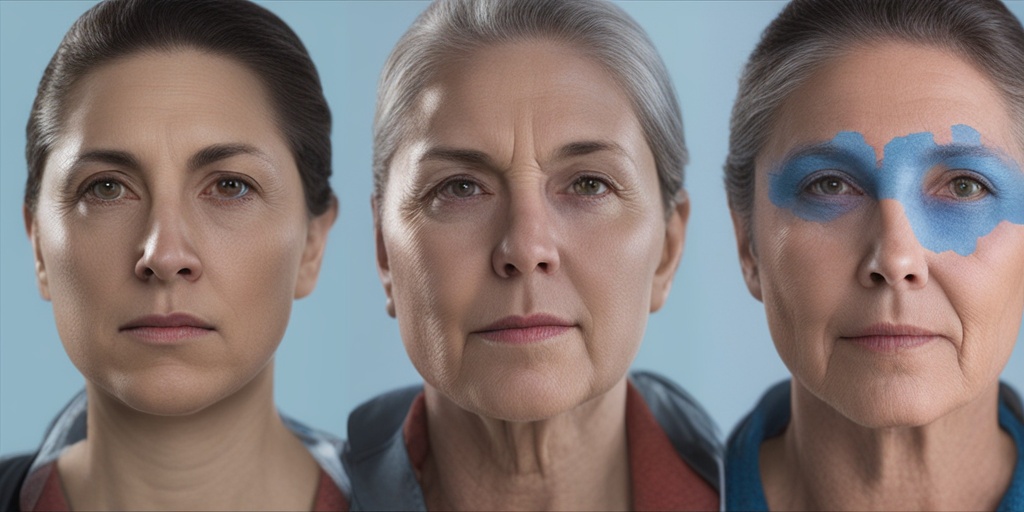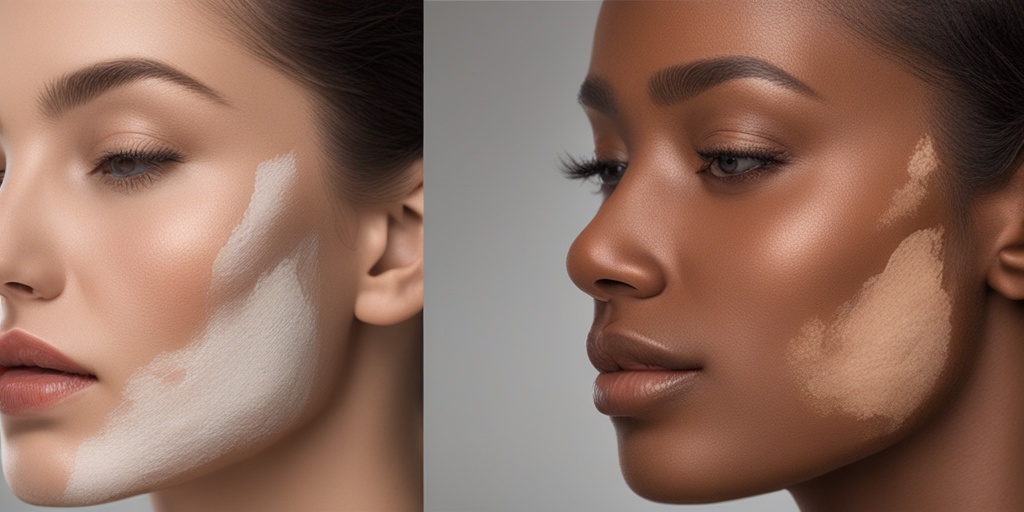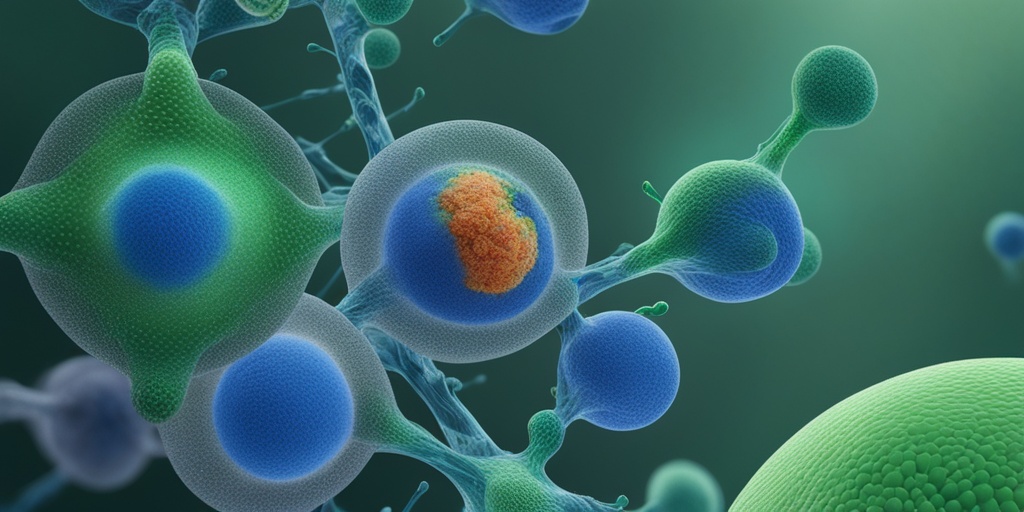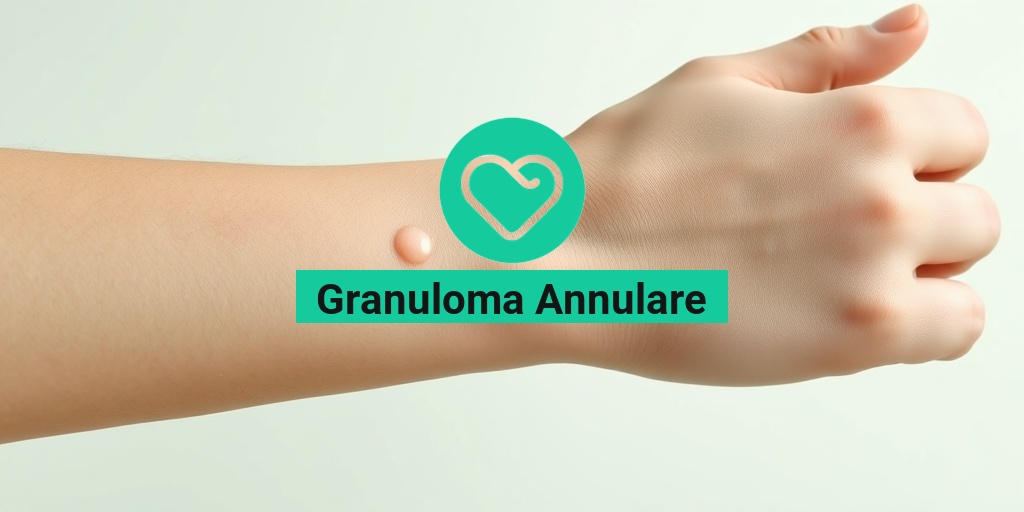What Is the Triple Symptom Complex of Behcet?
Have you ever heard of the Triple Symptom Complex of Behcet? If not, don’t worry – it’s a relatively rare condition that affects only a small percentage of the population. But for those who do experience it, understanding what it is and how it affects the body is crucial for managing symptoms and improving quality of life.
Defining the Triple Symptom Complex
The Triple Symptom Complex of Behcet, also known as Behcet’s disease, is a chronic and inflammatory condition that affects various parts of the body. The “triple symptom” part of the name refers to the three main symptoms that characterize the condition:
- Recurring oral ulcers: Painful sores that appear in the mouth, often on the tongue, lips, or gums.
- Genital ulcers: Similar to oral ulcers, but occurring in the genital area.
- Ocular inflammation: Inflammation in the eyes, which can cause redness, pain, and blurred vision.
These three symptoms are the hallmark of Behcet’s disease, although some people may experience additional symptoms such as skin rashes, joint pain, or gastrointestinal issues.
What Causes the Triple Symptom Complex?
The exact cause of Behcet’s disease is still unknown, but research suggests that it may be related to a combination of genetic and environmental factors. Some potential triggers include:
- Genetic predisposition: Having a family history of the condition may increase the risk of developing it.
- Infections: Bacterial or viral infections may trigger the onset of symptoms.
- Immune system dysfunction: An overactive or underactive immune system may contribute to the development of Behcet’s disease.
While the exact cause is still a mystery, understanding the underlying mechanisms can help healthcare professionals develop more effective treatment strategies.
Behcet’s Disease Overview
Now that we’ve covered the Triple Symptom Complex, let’s take a step back and look at Behcet’s disease as a whole.
Prevalence and Demographics
Behcet’s disease is a relatively rare condition, affecting approximately 1 in 100,000 people in the United States. It’s more common in certain ethnic groups, such as people of Middle Eastern or Asian descent. Women are also more likely to develop the condition than men.
Symptoms and Diagnosis
In addition to the Triple Symptom Complex, people with Behcet’s disease may experience a range of other symptoms, including:
- Fatigue
- Fever
- Joint pain or swelling
- Skin rashes or lesions
- Gastrointestinal issues
Diagnosing Behcet’s disease can be challenging, as the symptoms can be similar to those of other conditions. A healthcare professional will typically conduct a physical examination, take a thorough medical history, and order laboratory tests to rule out other possibilities.
Treatment and Management
While there is no cure for Behcet’s disease, various treatments can help manage symptoms and improve quality of life. These may include:
- Medications to reduce inflammation and pain
- Topical creams or ointments to treat skin and mucous membrane lesions
- Immunosuppressive therapy to reduce immune system activity
- Lifestyle changes, such as stress management and a balanced diet
If you’re struggling to understand Behcet’s disease or need personalized guidance, consider consulting with a healthcare professional or exploring evidence-based resources like Yesil Health AI. With the right support and treatment, it’s possible to manage symptoms and live a fulfilling life with Behcet’s disease 💪.

Eye Symptoms of Behcet’s Disease
Behcet’s disease is a rare and complex autoimmune disorder that affects various parts of the body, including the eyes. In fact, eye symptoms are one of the most common manifestations of Behcet’s, occurring in up to 70% of patients. 🤕
Uveitis: The Most Common Eye Symptom
The most common eye symptom of Behcet’s disease is uveitis, which is inflammation of the uvea, the middle layer of the eye. Uveitis can cause a range of symptoms, including:
- Eye pain or discomfort
- Redness and swelling of the eye
- Sensitivity to light (photophobia)
- Blurred vision or loss of vision
- Floaters or flashes of light in the vision
Uveitis can be acute or chronic, and it’s essential to seek medical attention promptly if you experience any of these symptoms. Delayed treatment can lead to complications, such as cataracts, glaucoma, or even blindness.
Other Eye Symptoms of Behcet’s Disease
In addition to uveitis, Behcet’s disease can cause other eye symptoms, including:
- Retinal vasculitis: inflammation of the blood vessels in the retina
- Optic neuritis: inflammation of the optic nerve
- Episcleritis: inflammation of the episclera, a thin layer of tissue covering the white part of the eye
- Scleritis: inflammation of the sclera, the white part of the eye
These symptoms can cause a range of vision problems, from mild to severe, and may require prompt medical attention to prevent complications.
Skin Symptoms of Behcet’s Disease
Behcet’s disease can also cause a range of skin symptoms, which can be painful, uncomfortable, and affect a person’s quality of life. 🤕
Aphthous Ulcers: The Most Common Skin Symptom
The most common skin symptom of Behcet’s disease is aphthous ulcers, which are painful sores that can occur on the:
- Mouth
- Genitals
- Anus
Aphthous ulcers are usually shallow, round, and painful, and can take several weeks to heal. They can be triggered by stress, fatigue, or certain foods.
Other Skin Symptoms of Behcet’s Disease
In addition to aphthous ulcers, Behcet’s disease can cause other skin symptoms, including:
- Acne-like lesions
- Erythema nodosum: painful, red bumps on the legs
- Papulopustular lesions: small, red bumps that can become pus-filled
These skin symptoms can be uncomfortable, painful, and affect a person’s self-esteem and confidence. It’s essential to work with a healthcare provider to manage these symptoms and prevent complications.
Early diagnosis and treatment are crucial in managing the Triple Symptom Complex of Behcet’s disease, including eye and skin symptoms. By understanding these symptoms and seeking medical attention promptly, you can reduce the risk of complications and improve your quality of life. 💊

Mouth Symptoms of Behcet’s Disease
When it comes to Behcet’s disease, one of the most common and noticeable symptoms is mouth sores or ulcers. In fact, more than 90% of people with Behcet’s disease experience mouth symptoms. These sores can be painful, uncomfortable, and even affect your ability to eat, speak, and enjoy your daily life.
What Do Mouth Sores Look Like?
Mouth sores caused by Behcet’s disease can appear anywhere in the mouth, including the lips, tongue, gums, and inside the cheeks. They can be small or large, and may be single or multiple. The sores are usually:
- Painful
- Round or oval in shape
- White or yellowish in color
- Surrounded by a red border
These sores can be similar to canker sores, but they tend to be more severe and frequent in people with Behcet’s disease.
How Often Do Mouth Sores Occur?
The frequency and severity of mouth sores can vary from person to person. Some people may experience:
- Frequent and recurring sores
- Infrequent but severe sores
- Sores that heal quickly, only to return later
It’s essential to work with your healthcare provider to manage mouth symptoms and prevent complications.
Causes and Risk Factors of Behcet’s Disease
Despite extensive research, the exact cause of Behcet’s disease remains unknown. However, several factors are thought to contribute to the development of this condition:
Genetic Factors
Behcet’s disease tends to run in families, and certain genetic mutations may increase the risk of developing the condition. People of Middle Eastern or Asian descent are more likely to develop Behcet’s disease, suggesting a possible genetic link.
Environmental Triggers
Certain environmental factors may trigger the onset of Behcet’s disease in people who are genetically predisposed. These triggers can include:
- Viral or bacterial infections
- Stress
- Oral trauma or injury
- Smoking
While these factors may contribute to the development of Behcet’s disease, the exact mechanism is still not fully understood.
Autoimmune Response
Behcet’s disease is believed to be an autoimmune condition, meaning that the immune system mistakenly attacks healthy tissues in the body. This abnormal immune response leads to inflammation and damage to various parts of the body, including the mouth, skin, eyes, and joints.
Understanding the causes and risk factors of Behcet’s disease can help you better manage your symptoms and work with your healthcare provider to develop an effective treatment plan. 💊

Diagnosing the Triple Symptom Complex of Behcet
Behcet’s disease is a rare and complex autoimmune disorder that affects various parts of the body, including the skin, eyes, joints, and digestive system. One of the most distinctive features of Behcet’s is the Triple Symptom Complex, which consists of three primary symptoms: oral ulcers, genital ulcers, and eye inflammation. Diagnosing Behcet’s can be challenging, but understanding the Triple Symptom Complex is crucial for accurate diagnosis and effective treatment.
What are the symptoms of the Triple Symptom Complex?
The Triple Symptom Complex of Behcet’s disease is characterized by the following symptoms:
- Oral ulcers: Painful sores that develop on the tongue, lips, gums, and inside the mouth. These ulcers can be shallow or deep and may take several weeks to heal.
- Genital ulcers: Painful sores that develop on the genitals, anus, or surrounding skin. These ulcers can be similar to oral ulcers and may take several weeks to heal.
- Eye inflammation: Inflammation in the eyes, including uveitis, iritis, and conjunctivitis. This can cause eye pain, blurred vision, and sensitivity to light.
How is the Triple Symptom Complex diagnosed?
Diagnosing the Triple Symptom Complex of Behcet’s disease involves a combination of physical examination, medical history, and laboratory tests. There is no single test for Behcet’s, so doctors rely on a comprehensive evaluation to rule out other conditions and confirm the diagnosis.
Some of the diagnostic tests used to diagnose Behcet’s include:
- Pathergy test: A skin prick test that checks for skin hypersensitivity.
- Imaging tests: Such as X-rays, CT scans, or MRI scans to rule out other conditions.
- Lab tests: To check for inflammation, immune system dysfunction, and rule out other autoimmune disorders.
- Eye exams: To evaluate eye inflammation and vision problems.
Challenges in diagnosing Behcet’s
Diagnosing Behcet’s can be challenging due to several reasons:
- The symptoms can be similar to those of other conditions, making it difficult to distinguish Behcet’s from other autoimmune disorders.
- The disease can have a variable presentation, with some people experiencing mild symptoms and others experiencing severe symptoms.
- There is no single diagnostic test for Behcet’s, making it essential to rely on a comprehensive evaluation.
🔍 Accurate diagnosis is crucial for effective treatment and management of Behcet’s disease. If you suspect you or a loved one may have Behcet’s, consult a healthcare professional for a comprehensive evaluation and diagnosis.
Treatment Options for Behcet’s Disease
While there is no cure for Behcet’s disease, various treatment options can help manage the symptoms, reduce inflammation, and improve quality of life. The goal of treatment is to alleviate symptoms, prevent complications, and improve overall health.
Medications for Behcet’s
Medications are a crucial part of Behcet’s treatment. The type and dosage of medication depend on the severity of symptoms, the individual’s overall health, and the presence of any underlying conditions.
Some common medications used to treat Behcet’s include:
- Corticosteroids: To reduce inflammation and suppress the immune system.
- Immunosuppressive medications: To reduce inflammation and prevent tissue damage.
- Pain relievers: To manage pain and discomfort.
- Antibiotics: To treat secondary infections.
Lifestyle Changes for Behcet’s
In addition to medications, lifestyle changes can help manage Behcet’s symptoms and improve overall health.
Some recommended lifestyle changes include:
- Stress management: To reduce stress and anxiety, which can exacerbate symptoms.
- Healthy diet: To maintain a balanced diet rich in fruits, vegetables, and whole grains.
- Regular exercise: To improve overall health and reduce stress.
- Avoiding triggers: Identifying and avoiding triggers that can exacerbate symptoms.
💊 By combining medications with lifestyle changes, individuals with Behcet’s can better manage their symptoms and improve their quality of life.

Frequently Asked Questions about Triple Symptom Complex of Behcet
What is Triple Symptom Complex of Behcet?
The Triple Symptom Complex of Behcet, also known as Behcet’s disease, is a rare and chronic autoimmune disorder that affects various parts of the body. It is characterized by a triad of symptoms: mouth sores, genital sores, and eye inflammation.
What are the common symptoms of Triple Symptom Complex of Behcet?
Besides the triple symptom complex, people with Behcet’s disease may experience:
- Fever
- Fatigue
- Joint pain and swelling
- Skin rashes and lesions
- Eye problems, such as blurred vision and sensitivity to light
- Brain and nervous system problems, such as headaches and seizures
How is Triple Symptom Complex of Behcet diagnosed?
Diagnosing Behcet’s disease can be challenging, as the symptoms are similar to those of other conditions. A doctor will typically perform a physical examination, take a medical history, and conduct laboratory tests to rule out other conditions.
Is there a cure for Triple Symptom Complex of Behcet?
Unfortunately, there is no cure for Behcet’s disease. However, treatment can help manage the symptoms and prevent complications. Medications, such as corticosteroids and immunosuppressive drugs, can help reduce inflammation and suppress the immune system.
How does Triple Symptom Complex of Behcet impact daily life?
Living with Behcet’s disease can be challenging, as it can affect various aspects of daily life, including:
- Work and education: The disease can cause frequent absences and impact productivity.
- Relationships: The emotional toll of the disease can strain relationships with family and friends.
- Self-esteem: The physical symptoms can affect self-confidence and body image.
Can Triple Symptom Complex of Behcet be prevented?
There is no known way to prevent Behcet’s disease, as the exact cause is still unknown. However, early diagnosis and treatment can help prevent complications and improve quality of life.
What is the prognosis for Triple Symptom Complex of Behcet?
The prognosis for Behcet’s disease varies from person to person. With proper treatment, most people can lead active and productive lives. However, the disease can be unpredictable, and some people may experience frequent relapses.
Where can I find more information about Triple Symptom Complex of Behcet?
There are many resources available for people with Behcet’s disease, including:
- The American Behcet’s Disease Association (ABDA)
- The National Institute of Neurological Disorders and Stroke (NINDS)
- The Behcet’s Disease Foundation
Remember to consult a healthcare professional for personalized advice and treatment. 💊




